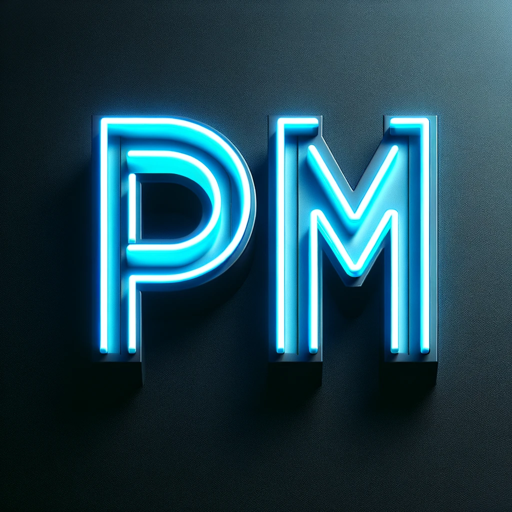Functional Requirements Writer-functional requirements generator
AI-powered Functional Requirements Generation
Can you create a ubiquitous requirement for a system?
What would be a state-driven requirement for an app?
How would you write an event-driven requirement?
Could you provide an unwanted behavior requirement example?
Related Tools
Load More
֎ Report Writer ֎
Upload your half written report and I will help you finish it

Technical Documentation Writer Pro
A specialist in creating and assisting with technical documentation, focusing on clarity and accuracy.

Report Writer 🖋️
Ai Report Writer | Report Writing Help | Write My Report

Product Requirements Document (PRD) Writer
I'll help you write a Product Requirements Document

Technical Writing Assistant
Technical writer skilled in planning and structuring content with user input.

PRD Maker
Aide for PMs in drafting product requirement docs.
20.0 / 5 (200 votes)
Introduction to Functional Requirements Writer
The Functional Requirements Writer is designed to assist in the precise and clear formulation of software requirements. It leverages the Easy Approach to Requirements Syntax (EARS) to ensure that requirements are well-defined and unambiguous. This tool aims to bridge the gap between stakeholders and developers by providing a structured method for capturing and conveying the functionality of software systems. For instance, in a scenario where a team is developing a new e-commerce platform, the Functional Requirements Writer can help articulate requirements for user authentication, product search, and payment processing in a way that all parties understand and agree upon.

Main Functions of Functional Requirements Writer
Requirement Specification
Example
Defining the functionality for a user login system.
Scenario
A development team needs to ensure that their login system supports multiple authentication methods. The Functional Requirements Writer can specify requirements such as 'When a user attempts to log in, the system shall support both password and biometric authentication.'
Stakeholder Communication
Example
Facilitating discussions between business analysts and developers.
Scenario
In a project meeting, a business analyst uses the Functional Requirements Writer to clearly outline the expected behavior of a new feature. This reduces misunderstandings and ensures that developers have a concrete understanding of what needs to be built.
Requirement Validation
Example
Ensuring requirements meet quality standards.
Scenario
Before development begins, the Functional Requirements Writer checks that each requirement is specific, measurable, achievable, relevant, and time-bound (SMART). This validation step helps to avoid vague or unrealistic requirements that could derail the project.
Ideal Users of Functional Requirements Writer
Business Analysts
Business analysts benefit from using the Functional Requirements Writer as it helps them translate business needs into detailed technical requirements. By providing a structured approach, it ensures that all aspects of the requirements are covered, reducing the risk of miscommunication and errors during development.
Software Developers
Software developers use the Functional Requirements Writer to gain a clear understanding of what needs to be built. It aids in creating a comprehensive development plan, ensuring that all functional aspects are considered and implemented correctly. This tool helps in maintaining consistency and accuracy throughout the development process.
Project Managers
Project managers can leverage the Functional Requirements Writer to oversee requirement gathering and validation processes. It assists in tracking the progress of requirement definition and ensures alignment with project goals and timelines. This leads to better project planning and execution.

How to Use Functional Requirements Writer
Step 1
Visit aichatonline.org for a free trial without login, also no need for ChatGPT Plus.
Step 2
Familiarize yourself with the Easy Approach to Requirements Syntax (EARS) templates, which guide the creation of requirements.
Step 3
Identify the type of requirement you need (Ubiquitous, State-driven, Event-driven, Optional Feature, Unwanted Behavior) based on your project specifications.
Step 4
Use the tool to input your project details and generate functional requirements, ensuring clarity and conciseness.
Step 5
Review and refine the generated requirements to match your project needs, leveraging the tool's suggestions and best practices.
Try other advanced and practical GPTs
Continue Generating
AI-powered tool for content and ideas

Proof Read and Continue
AI-powered proofreading and content enhancement

French
AI-powered translation for seamless French communication.

French Pote
AI-powered translations, instantly.

French Translator
AI-powered translations between English and French

French Tutor
AI-powered French learning assistant
Confluence Product Requirement Creator
AI-driven tool for crafting product requirements.

Product Requirements Document (PRD) Writer
AI-powered tool for creating PRDs

Autism , ADHD, Neurodiversity Glassbox Fitness
AI-Powered Neurodiversity Fitness

Fitness Witness
AI-powered fitness and wellness coaching.

Engineering Genius
Intelligent engineering solutions, powered by AI

Geotechnical Engineering
AI-Powered Geotechnical Analysis Tool

- Project Management
- Software Projects
- Template Usage
- Requirement Drafting
- Requirement Refinement
Frequently Asked Questions about Functional Requirements Writer
What is the main purpose of the Functional Requirements Writer?
The Functional Requirements Writer helps create precise and clear functional requirements for software projects using the Easy Approach to Requirements Syntax (EARS).
Do I need any prior knowledge to use this tool?
Basic understanding of software requirements is helpful but not necessary. The tool provides templates and guides to assist users at all levels.
Can this tool be used for any type of software project?
Yes, the Functional Requirements Writer is versatile and can be used for various software projects, including web applications, mobile apps, and enterprise systems.
How does the tool ensure the quality of generated requirements?
The tool uses best practices and templates from the EARS methodology to ensure that the requirements are well-structured, clear, and concise.
Is there a way to customize the requirements generated by the tool?
Yes, users can refine and customize the generated requirements to better fit their specific project needs and constraints.